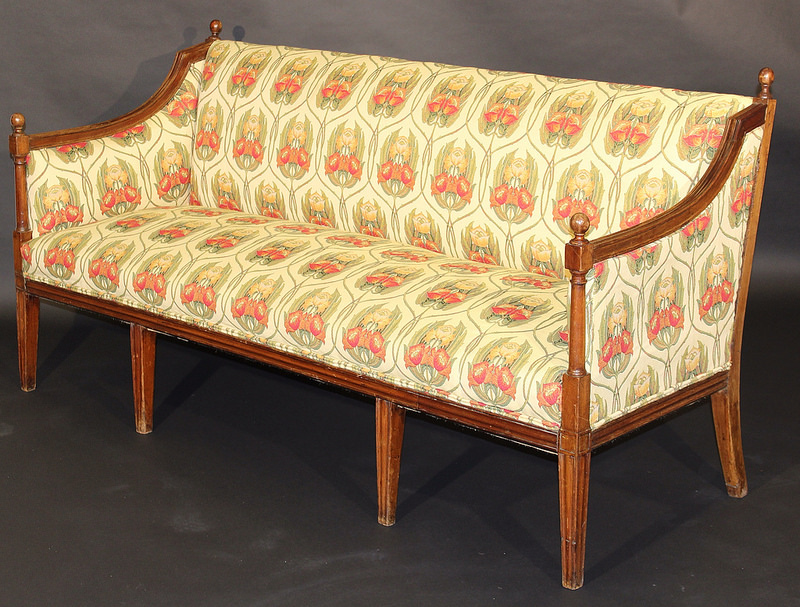A sofa believed to have belonged to the man who inspired the character of Mr Darcy in Jane Austen’s Pride and Prejudice is to be sold at a Cotswolds antiques auction.
The George III mahogany framed sofa – which was reputedly owned by Thomas Lefroy of Carrigglas Manor in County Longford, Ireland – is expected to achieve between £1,000 and £1,500 when it goes under the hammer at Moore Allen & Innocent in Cirencester on Friday, February 28.
Lefroy was a friend and suitor of Jane Austen, and is believed to have been the inspiration for her romantic hero, Mr Darcy.
Austen and Lefroy – who were both 20 – began a whirlwind romance in 1796, the year that Pride and Prejudice was written. The romance ended swiftly when the law student was called to the Bar in Ireland.
In letters to her sister Cassandra, Austen wrote Lefroy: “He is a very gentlemanlike, good-looking, pleasant young man…”
Lefroy went on to enjoy an illustrious career in law and politics. He was a privy councillor of Ireland from 1835 to 1869 – the year of his death – and was Lord Chief Justice of Ireland from 1852 until 1866.
In his latter years, Lefroy admitted to his nephew that he had loved Jane Austen, but stated that it was a “boyish love”.
The sofa is upholstered in Art Nouveau style fabric over a fluted show frame on eight tapering legs.
Auctioneer Philip Allwood said: “The courtship of Tom Lefroy and Jane Austen is well documented, and this sofa comes with excellent provenance.
“We are expecting considerable interest not just from collectors of antique furniture, but also from fans of Jane Austen and her works.”
Also from the reign of George III is a D shaped satinwood tea table which, by repute, once belonged to George Grenville, prime minister of Great Britain between 1763 and 1765.
Grenville was the author of the controversial Stamp Act, an unpopular tax which led to protests and rioting in the American Colonies, and ultimately contributed to the war of independence.
The table is expected to achieve £300 to £500.
Also with excellent provenance is an 18th century Chinese Qianglong armorial dish, measuring more than 33cm wide, which is decorated with a cartouche enclosing an elephant and a sheep, and inscribed Mansuetis Grandia Cedunt (size yields to meekness).
The dish belonged to Major General Sir George Burns of North Mymms Park, Hertfordshire, commander of the third battalion of the Coldstream Guards in Palestine from 1947 until 1950, and Lord Lieutenant of Hertfordshire for 25 years.
The dish is part of a large collection of Qianglong pottery, including a pair of 22cm tall bough pots with floral spray and relief work (£1,000 to £1,500), and a 21cm tall polychrome-decorated punch pot (£500 to £800).
Staying in China, a near-matching pair of carved ivory concentric puzzle balls, decorated with carved dragons amongst clouds, is expected to achieve £600 to £900.
The puzzles are mounted on intricately carved bases, and one is surmounted by a tiger, while a horse sits atop the other.
Another carving, from far closer to home, is a medieval stone head, dating from the 11th to 13th century, which was found in a field in the historic Cotswolds parish of Avening. The 14cm wide carving carries an estimate of £100 to £150.
And by far the oldest lot at the auction is a metallic meteorite fragment of approximately 5cm in diameter, which carries an estimate of £50 to £80.
For a full auction catalogue, log on to www.mooreallen.co.uk

